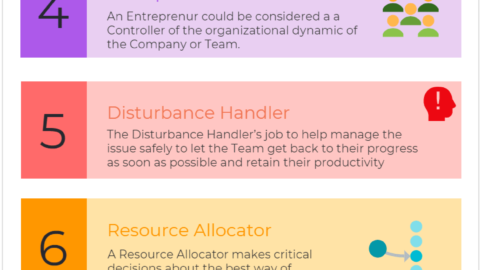4 Actionable Tips For Improving Remote Team Productivity
If you’re managing a remote team, you’re definitely in for a challenge. It’s already tough managing a physical team, as it is. This is made even greater when your team members are all based in different locations. One of the major concerns of managers and department heads of remote teams could be the potential decline in remote team productivity. With the right tactics in place, however, productivity doesn’t have to suffer, simply because what you have is a remote team. Workers can still have the same level of engagement and accountability with their colleagues and superiors as they would, had they been sharing a physical space.
Table of Contents
Luckily, technology has made it as easy and actionable to manage remote team as it is to have that kind of working arrangement in the first place. This discussion below guides you in that pursuit.
1. Utilize Technology To Your Advantage
What’s remote working without maximizing the use of technology? Yes, it’s technological advancements that made remote working possible in the first place. But, it doesn’t simply end there. If you choose the right employee tracking app, software, and data management tools, for instance, as managers, you can still ensure the productivity of your remote team. You can start by taking in providers like Netgain’s IT services in Lexington.
Have this discussion with each of your department heads or the HR team. It’s up to you to select the app or software which you think is the best to use for your team. Of course, this choice also depends on the type of work you all do and the size of your team.
Technology makes it easier for the manager to provide oversight to the team, without shadowing over them too much or micromanaging them. It also ensures every team member is held accountable for the hours of work they have to do or the tasks they have to complete.

2. Schedule Video Meetings Only When Needed
One of the common misconceptions some managers may think is that holding meetings regularly with a remote team will keep remote team productivity high. This may not necessarily be true. Especially when the subject matters of the required meetings can be sent by email or a digital memo.
When managing a remote team, some of your team members may come from different time zones. It’s a challenge in itself to pull everyone together at a unified time that’s best for everyone. That time spent holding meetings would’ve also been better spent completing work-related tasks. Remember that for many remote workers. They choose that kind of arrangement because they have other obligations at home or in their lives that make it difficult for them to work in a physical office.
With that said, schedule video meetings only when they’re absolutely necessary. One meeting, monthly, isn’t too bad. In fact, it may even help increase and improve employee efficiency and engagement, which, in turn, improves their productivity as well.
3. Check In, Without Being Overbearing
If you’re a department head or HR manager reading this, how often do you check on your team members? Remote working may seem ideal for many, but it comes with its challenges, too, from each team member’s side. There are distractions at home from chores, noisy children, homeschooling children, family problems, and many others that afffect remote team productivity.
Treat all remote workers as you would the physical staff in a face-to-face setting. Make it a point to check in members regularly, without necessarily being too overbearing or without prying on their personal lives.
Who knows? After that little pep talk or confidential one-on-one, the remote worker concerned may feel better, and, therefore, be more productive at work. The key is to assess each one from time to time, and see if there are any significant changes in their work habits, like a decline in work productivity, for example.
4. Set Clear Expectations
For remote workers to stay productive, they need to be given their respective key performance indicators (KPIs), too. Those KPIs define what’s expected of each one, to be completed every day. Managers must make it clear that remote employees still have to hit company goals. Even with that difference in work arrangement they have.
Open communication is key. Let your remote workers be honest and realistic about how much they can do, too, in any given day, given their remote working schedule. This kind of open communication between the managers and team members can help ensure that everyone’s on the same page with the goals.
Conclusion: Mastering Remote Team Productivity
Change is the only thing in the world. And over the past years, many businesses have been subject to a lot of change. Keeping up with those changes means adapting to new working arrangements, one of which is remote working. While a significant and big change, when done correctly, remote working actually has its own set of advantages to businesses.
Nonetheless, despite the advantages, managing a totally remote staff may be challenging. When you’re away from the office and don’t have the same degree of oversight as you used to, it may be difficult to ensure that all of your remote workers are remaining productive and engaged.
The good news is that remote productivity is not insurmountably difficult to achieve. We’ve provided you with some excellent suggestions for managing your remote staff. With the right tools in hand, avoiding micromanagement, and streamlining your procedures, there is nothing that can prevent you and your team from attaining their full remote production potential. Wishing you the best of luck!

Dan Sanderton has 19 years of experience in the publishing world as an editor and writer, including his former role as marketing director of ProjectHills Consultancy, and now as Content Developer for PMI.










